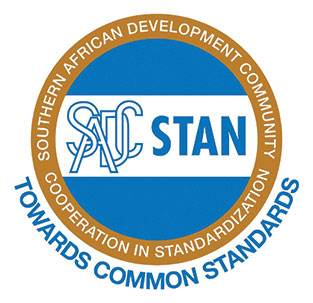
SADCSTAN Standards Bodies
Highlights from Standards Organizations in Botswana, South Africa, Zambia and Zimbabwe
A population of nearly 200 million people makes up the 14 member states of the Southern African Development Community, which furthers economic growth and the quality of life in Southern Africa. And, through its SADC Cooperation in Standardization (SADCSTAN), the group has the goal of harmonizing standards and technical regulations.
Eleven of the 15 SADC members have MOUs with ASTM International, and collectively, more than 2,000 ASTM International standards are cited by SADC MOU partners. ASTM International works with standards professionals in SADCSTAN in a number of areas. Here are highlights of that work.
Training Program for SADCSTAN Members: In January, Lesotho, Malawi and Zambia, three SADCSTAN member countries, sent representatives to the United States through a visit coordinated by the Standards Alliance, an initiative of the American National Standards Institute – U.S. Agency for International Development. As part of the weeklong training on national enquiry points, standards and conformance, ASTM International staff members Teresa Cendrowska, vice president of global cooperation, and Kimberly Simms, manager of global cooperation, made a presentation about ASTM International and its consensus standards process.
Botswana Bureau of Standards: Jonah Ernest, principal standards engineer, BOBS, who is responsible for the development of mechanical engineering standards, reports that the MOU benefits his organization through ASTM standards that are consulted, used or adopted for Botswana's national standards. He notes that standards for concrete and aggregates, petroleum products, soaps, polishes, leather and resilient floor covering that have been consulted; and plastics, rubber, and building-related standards have been recently used as normative references. During an April 2012 attachment at ASTM International, Ernest learned more about the consensus process, he says, particularly on ensuring balanced involvement to help lead to unbiased, practical and applicable standards, and the importance of developing standards that are truly market-driven. BOBS has been an ASTM MOU partner since 2007.
South African Bureau of Standards: An MOU partner since 2003, SABS has been particularly interested in the technical information and standards from Committees A01 on Steel, Stainless Steel and Related Alloys; D01 on Paint and Related Coatings, Materials and Applications; D02 on Petroleum Products, Liquid Fuels and Lubricants; and D19 on Water. The MOU access to ASTM International standards has been beneficial to SABS standards developers. "When work is starting on a new national standard, particularly involving metals, petroleum or water, one of the first things the standards writer and technical committee will do is to study the test methods used by ASTM," according to Sasiso Zangqa, an international relations specialist at SABS, who was attached to ASTM staff in April-June 2012.
Zambia Bureau of Standards: Adoption of ASTM International standards has been of great benefit to ZABS, notes Margaret Lungu, ZABS standards development manager. For example, "ASTM standards have been helpful guides in the compilation of test methods for petroleum testing," she says. "We use the ASTM standard methods for our day–to-day laboratory test work, especially in the petroleum laboratories." Two of these standards are ASTM D2622, Test Method for Sulfur in Petroleum Products by Wavelength Dispersive X-Ray Fluorescence Spectrometry, and D4294, Test Method for Sulfur in Petroleum and Petroleum Products by Energy Dispersive X-Ray Fluorescence Spectrometry. She also notes that ZABS standards officers have also benefited from virtual training sessions on standards development.
Standards Association of Zimbabwe: Through the 2002 MOU signed with ASTM, SAZ has adopted, consulted or referenced numerous standards from ASTM Committee D02. According to Philip Chindara, SAZ chief technical officer, Zimbabwe has introduced the mandatory blending of all motor vehicle fuels and petroleum standards are now referenced in national regulations. "The standards help address our country's health, safety, environmental and economic conditions by setting globally acceptable quality requirements," Chindara says. Also through the MOU, Romana Marunda, a standards development and information management expert at SAZ, came to ASTM International for a month in 2012 to participate in the ASTM Standards Expert Program. Marunda manages the Zimbabwe national standards program and the standards information center, which is also the country's World Trade Organization/Technical Barriers to Trade inquiry point.
For more information about the ASTM International MOU Program, visit the ASTM website.
 SN Home
SN Home Archive
Archive Advertisers
Advertisers Masthead
Masthead RateCard
RateCard Subscribe
Subscribe Email Editor
Email Editor